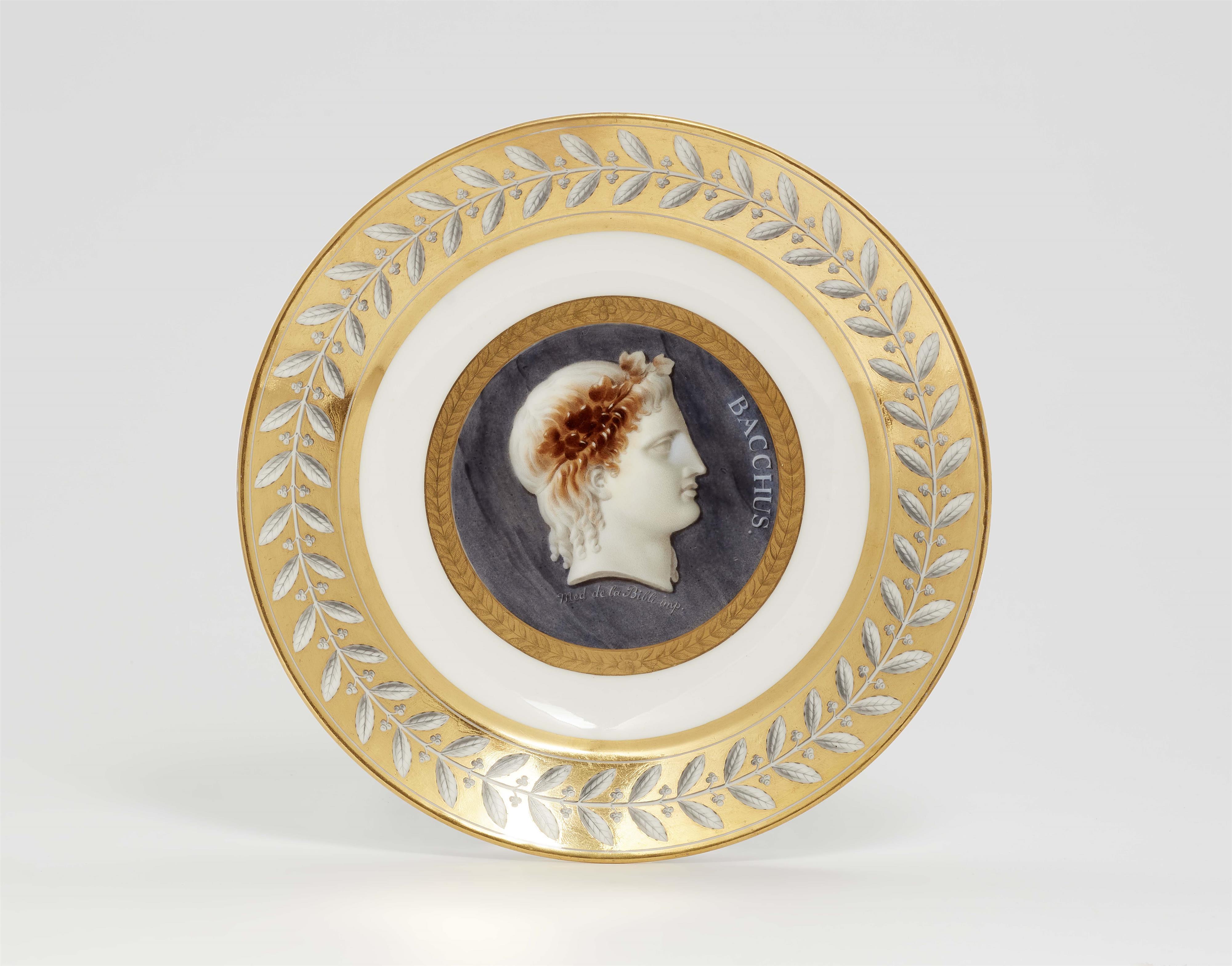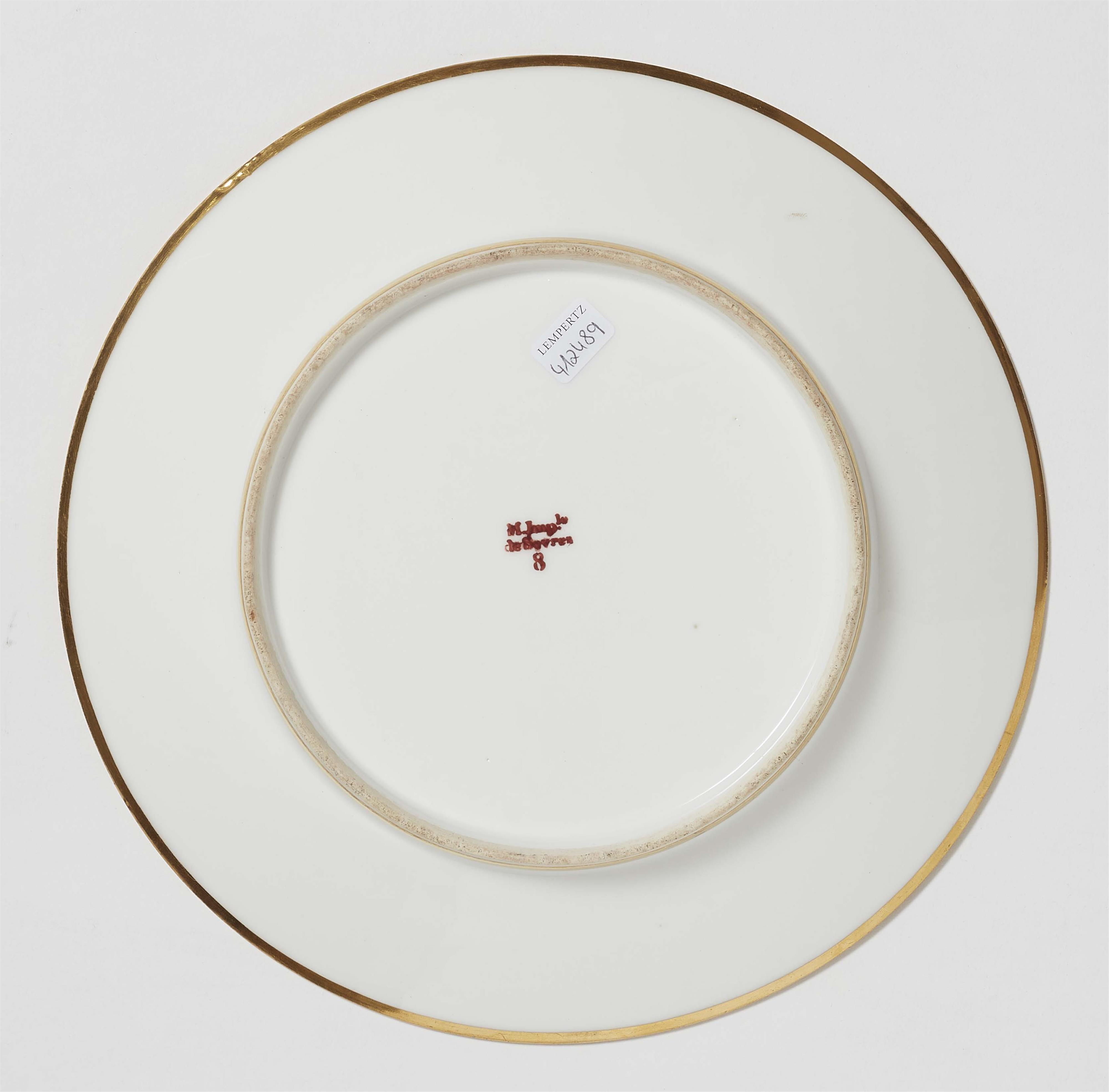A rare Sèvres porcelain plate from a dessert service for Duke Nikolai Petrovich Romanzoff/ Roumiantsev
Porzellan (pâte dure), Camaieumalerei in eingeschränkter Polychromie, Vergoldung. The centre decorated with a faux camaieu portrait inscribed "BACCHUS." and "Med de la Bibli imp." on grey stone ground, bordered by a laurel wreath. Red stamped mark M. Imp.Ie/ de Sèvres/ 8,, illegible incised marks. A retouch to the gilding at 12 o'clock. D 23.5 cm.
1808.
Count Nikolai Petrovich Romanzoff or Rumyantsev (1754 - 1826) was born in St. Petersburg, the son of Field Marshal Pyotr Rumyantsev-Zadunaisky. After the Treaty of Teschen in 1779, he came to Germany as Russia's first envoy to the Holy Roman Empire, where he stayed in Cologne and other places. In 1808, Tsar Alexander I appointed him foreign minister. In this position, he worked to ensure that Russia sought a closer alliance with France. When Napoleon finally invaded in 1812, he suffered a stroke and lost his hearing.
The service "de dessert à marly fond d'or avec laurier en gis têtes imitant le camée" was offered for sale on 31st December 1808, and delivered on 11th February 1809. Of the 114 plates with cameo decoration originally produced, the Russian minister received 96. The service also included 36 plates decorated only with laurel wreaths on gold ground, without the faux cameo painting, as well as 16 compote bowls, four footed bowls, four sugar bowls with sculpted eagles, eight shallow baskets and two vase shaped glass coolers with elephant head reliefs. Another very similar dessert service, differing only in the burnished gold rim, was given by Napoléon to the King of Württemberg on 29th December 1809.
Literature
Cf. cat. Napoléon Ier & la Manufacture de Sèvres. L´art de porcelaine au service de l´Empire, Paris 2016, p. 275 for a plate in the Hermitage St. Petersburg and archival record of this service.




